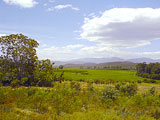Drivers of Commercial Cropland Expansion
5 Oct 2012
By Mareike Lange, Setareh Khalilian, Aslilhan Arslan for Kiel Institute for the World Economy
Part 1
Drivers of Commercial Cropland Expansion
Although the food price crisis of 2007–08 is seen as the main reason behind the current wave of large-scale international cropland investments, the acquisition of farmland abroad by governments is not a new phenomenon. Japan has been leasing land overseas for food production for many years, and China has officially included the investments in land abroad for food production in its development policy since 1990.
Between 1990 and 2007, cropland expansion has been concentrated mainly on oil crops (e.g. soybean, rapeseed, sunflower and oil palm), the demand for which has increased as a result of high demand for cooking oil in Asia, the extensive use of soybeans as feed, and increasing interest in the use of biodiesel in the European Union (EU). What the food price crisis of 2008 did to this process was to highlight the increasing risks to food security posed by climate change and the distrust in the functioning of international markets due to the export restrictions imposed by major producers. More often than not, these ‘major producers’ were also food importing countries with limited access to land and water but plenty of capital to finance the current “land rush.”
While climate change may open new areas to agricultural production, it is expected to decrease the yields of most important food crops in developing countries. This will also decrease the calorie availability and threaten global food security. Moreover climate change mitigation strategies, such as reforestation and an increased demand for biofuels, add to the pressures on land leading to a faster cropland expansion. Six million hectares of additional land is expected to be brought into production in developing countries each year until 2030 – sixty percent of which will be concentrated in Sub-Saharan Africa and Latin America.
The current increase in investments in large scale agricultural land has attracted criticism mainly because of its speed, scale, and the terms and conditions of contracts that are deemed to pose a threat to the livelihoods of small-holder farmers and communities. Quantitative analyses on the current land rush are scarce. However the World Bank reports a significant increase in interest in land acquisitions and a geographical shift towards Africa. Many of the investments are in countries with abundant availability of uncultivated non-forest land that have low population density. Most of the announced investments have not been implemented yet and they are more likely to target countries with weak recognition of rural land tenure and weak regulation. This is particularly troublesome because it underlines the potential negative impacts on the food security of smallholders and access to land for communities with customary land rights.

